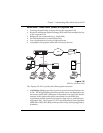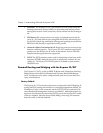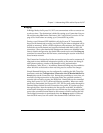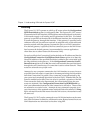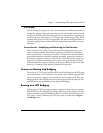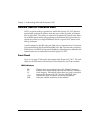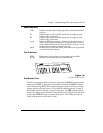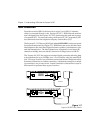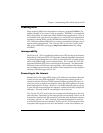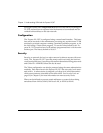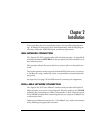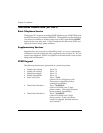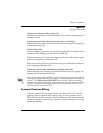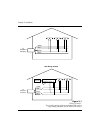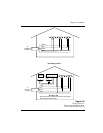
Chapter 1: Understanding ISDN and the Express XL/XLT
61200.070L1-1 Express XL/XLT User Manual 19
Ordering ISDN
When ordering ISDN from the telephone company, request EZ-ISDN 1 (Ca-
pability Package U) to ensure it is set up properly. EZ-ISDN 1 is recommend-
ed by the industry for most home office/small business applications. If this is
not available from your service provider or you would like more information
regarding ordering ISDN, see the ADTRAN document Ordering ISDN Service
User Guide part number 60000.015-8 or contact your telephone company for al-
ternative line configurations. The Ordering ISDN Service User Guide is avail-
able on the ADTRAN home page at http://www.adtran.com or by calling
ADTRAN.
Interoperability
The Express XL/XLT is standards based and uses PPP developed by Internet
Engineering Task Force (IETF). PPP provides a standard method of transport-
ing multi-protocol datagrams over point-to-point links. PPP is widely accept-
ed by many ISDN bridge/router manufacturers. The Express XL/XLT will
negotiate Multilink PPP when connecting both B-channels. The Bandwidth
Allocation Protocol (BAP) may also negotiate, which enhances the manage-
ment of adding and removing a B-channel. Data compression is also support-
ed using LZS
®
technology from hi/fn™.
Connecting to the Internet
Internet Service Providers (ISPs) assign an IP address to use when connected
to their service using PPP negotiation. This assignment is based on the as-
sumption that the user has an ISDN terminal adapter running PPP async-to-
sync conversion or another rate adaption where the PPP negotiation is termi-
nated inside the PCs IP stack. However, if an ISDN-ethernet gateway device
is used, the ISP must preassign the customer a subnet which uses multiple IP
addresses. This may result in a much higher cost to the user.
The Express XL/XLT permits the user to assign any IP addresses to the unit
and computers. Operations on the network can occur normally. In fact, one B-
channel can connect to the ISP using NAT while the other B-channel connects
to another “private” or “fake” network. All packets transmitted or received
over the ISP connection are translated. The Express XL/XLT keeps track of the
computers that request services over the Internet. A web server address can



